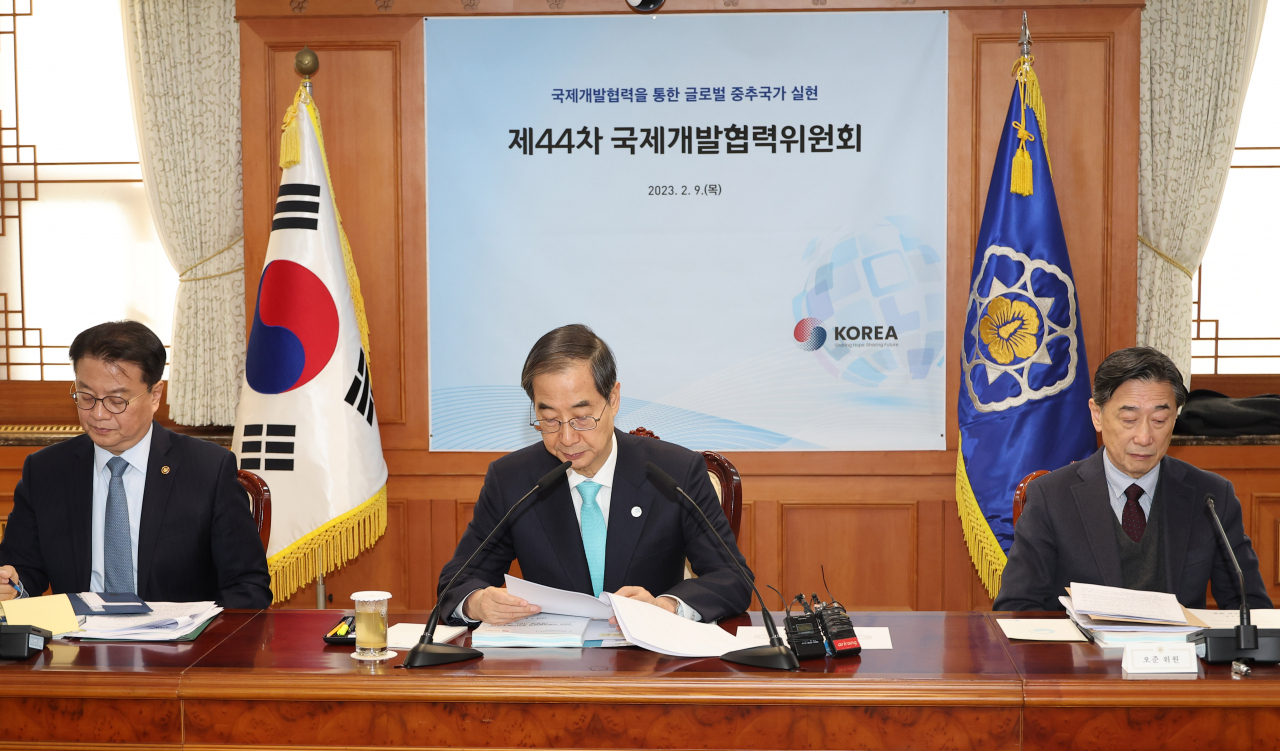 |
Prime Minister Han Duck-soo (center) chairs an intergovernmental meeting to discuss official development assistance for 2023 at the Seoul Government Complex on Thursday. (Yonhap) |
South Korea will spend more this year on official development assistance to the world’s poorest countries, a record on-year rise in foreign aid that also makes the total expenditure its biggest ever, amid Seoul’s push to leave a bigger global imprint.
Since December last year, the Yoon Suk Yeol administration has been looking for ways to deliver on its signature foreign policy, the Indo-Pacific Strategy, as Korea tries building on the plan to recast its image as a major player that is just as invested in helping underprivileged countries as it is interested in advancing its economic power.
Prime Minister Han Duck-soo, who chaired an intergovernmental meeting Thursday regularly held to discuss details on just how to make that happen, described the annual increase in overseas aid as evidence of a stronger commitment to international cooperation.
“We have our eyes set on becoming one of the top 10 aid donors by May 2027, before President Yoon leaves office,” Han said of the plans ahead, pledging a system overhaul. Korea’s aid spending in 2021 ranked 15th among the Organization for Economic Cooperation and Development, a 38-member coalition that has largely led overseas aid while bolstering free market principles.
About 4.7 trillion won ($3.7 billion) is earmarked for this year, a 21 percent jump from 2022. The funds, to be spent on 1,840 projects, will be handled by 45 bodies, including 12 municipalities, for 92 recipients as well as 56 international institutions.
Asia will be the largest recipient, with 38 percent of such aid flowing there soon, followed by Africa with 19 percent. Improving transportation will be the top priority in aid spending, as 13 percent of it will go there. Health care services and other humanitarian needs are next in line at 12 percent and 11 percent, respectively.
Setting up aid catering to the individual needs of African countries is what sets Thursday’s meeting apart from past ones, according to Han. The meeting, which kicked off in 2006, has taken place four times on average annually since 2010.
Officials at the meeting said Seoul will provide support for energy and digital businesses to countries in northern Africa, while the eastern region, which needs more immediate relief in terms of food, will be given tools to fight a health crisis. Thirty-three out of 54 African nations, roughly two-thirds, are heavily underdeveloped, a concern officials say they will help mitigate by boosting aid to the continent to twice what it was in 2019 by 2030. In 2021, Seoul spent $590 million.
Meanwhile, the meeting rewrote aid plans for five countries -- Ethiopia, Laos, Tanzania, Uganda and Vietnam -- a group of the larger 27 countries Korea sees as key nations with which it seeks to discuss development assistance. Changes in political situations in those countries prompted the revisions, according to officials.







